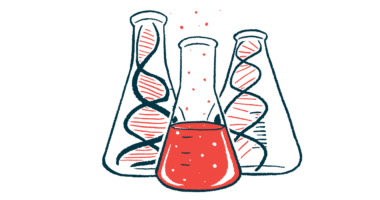Pediatric Lupus Needs Early Treatment to Reduce Disease Activity, Prevent Organ Damage, Study Says

Early treatment to reduce disease activity and prevent irreversible organ damage in pediatric systemic lupus erythematosus (pSLE) patients should be strongly considered, according to new study.
The research, “Pediatric Systemic Lupus Erythematosus: Learning From Longer Follow Up to Adulthood,” appeared in the journal Frontiers in Pediatrics.
pSLE has different clinical manifestations, higher disease activity with more organ damage, and presents a less-pronounced female/male ratio than SLE cases that start in adulthood.
Specifically, prior research has shown that pSLE, which represents about 10 percent of total SLE cases, leads to higher frequency of blood-related, neuropsychiatric and — especially — kidney complications, than adult-onset disease. However, despite its worse outcomes, studies in pSLE are scarce due to the small number of patients and the short duration of follow-up.
To address this gap, researchers at University of Pisa, in Italy, analyzed the clinical phenotype, disease activity, and organ damage at disease onset and during long-term follow-up in 25 pSLE patients.
By analyzing manifestations during the course of the disease, common patterns at disease onset, drivers of organ damage, and effects of treatment, the investigators aimed to “identify variables that may improve the diagnostic sensibility and management of pSLE patients,” they wrote.
Results revealed a mean age at disease onset of 14.6 years. Patients were followed-up for approximately 14 years. The most frequent initial manifestations were arthritis, malar rash (commonly known as “butterfly rash”), and reduced number of mature blood cells (cytopenias).
The researchers commented that while malar rash is recognized as highly suggestive for lupus, the clinical manifestation of arthritis is not specific to SLE, despite its high frequency. The investigators suggested that SLE should be considered in cases of unexplained arthritis, particularly in patients with alterations in blood cell counts.
No patients presented neuropsychiatric manifestations at diagnosis, which is contrary to the pSLE literature. The researchers hypothesized that the retrospective design of the study led to an underestimation of neurological symptoms.
The analysis also showed that the mean time for pSLE diagnosis after the first symptoms was six months, but significantly longer (54 months) for patients with immune-mediated cytopenia at disease onset.
“Patients with immune cytopenia represent a group deserving strict clinical follow-up for the risk of evolution to SLE,” the scientists wrote.
The percentage of patients with renal involvement increased from 36 percent to 72.2 percent after 10 years of follow-up. Increased incidence of vascular and neurological involvement was also observed during follow-up. Patients with chronic organ damage maintained higher disease activity during follow-up and took a higher dose of corticosteroids.
“The findings underline the necessity for early intervention in patients with pSLE to promptly reduce disease activity and prevent cumulative non-reversible organ damage,” the investigators commented.
Because non-lupus specific complications are more common in pSLE than in adult-onset disease, the investigators suggested that in pediatric patients, particularly in adolescents, diagnosis of lupus should be confirmed by the presence of unexplained organ involvement and signs of systemic inflammation.
“Early organ involvement, high disease activity and the considerable need for corticosteroids and immunosuppressive drugs make pSLE a challenge for clinicians, who should be trained on managing the complexity of a systemic disease with specific age-related differences and complications,” the scientists concluded.






